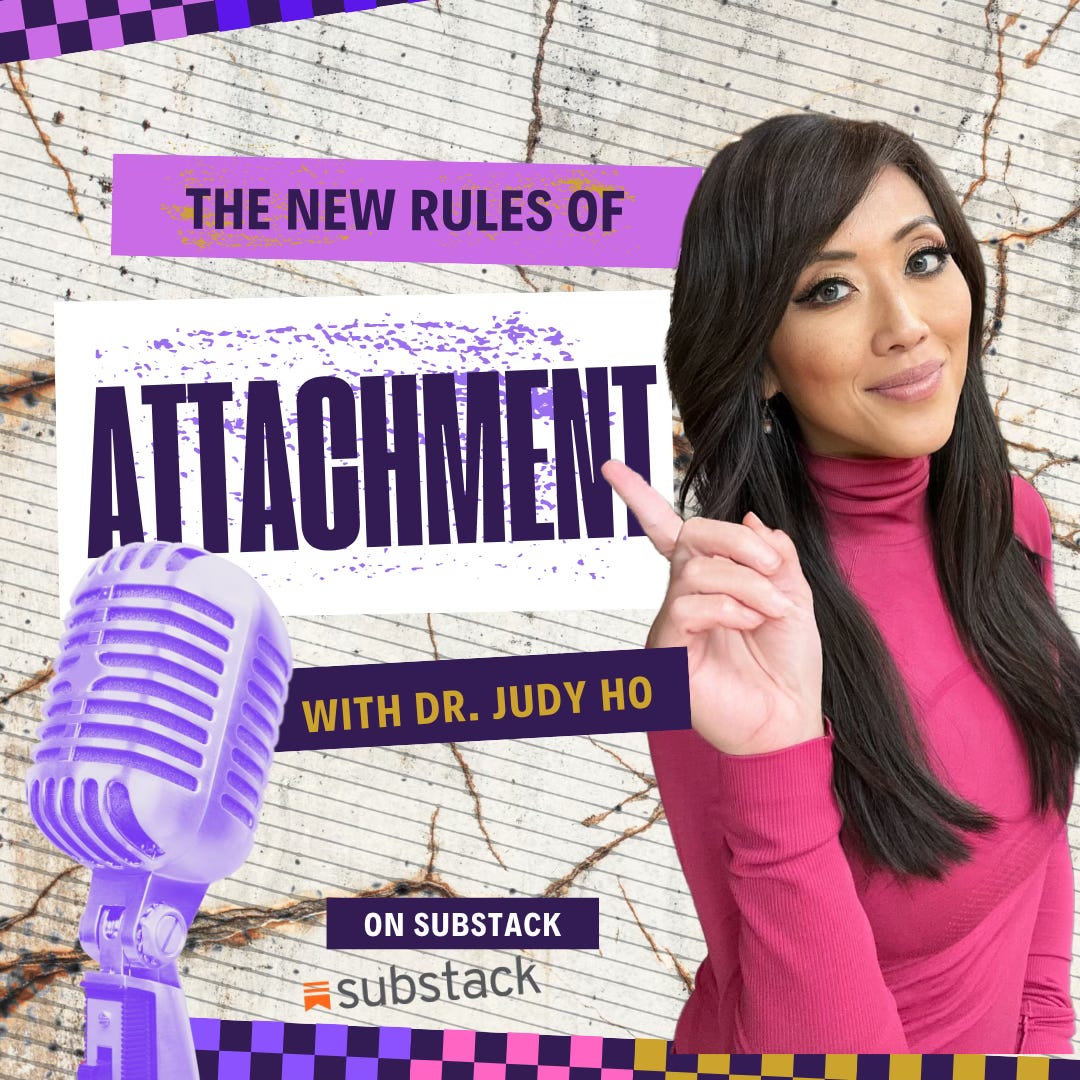While being “too nice” might seem like a virtue on the surface, when left unchecked, it can quietly unravel your mental health.
You know what I mean. You’re always the reliable one. Always agreeable. The peacekeeper. The one who never rocks the boat.
These traits are often praised. But when your niceness becomes reflexive and consuming, it can start to erase your needs, silence your boundaries, and cost you your sense of identity.
In this post — and in the latest episode of Mental Health Bites (listen right here in substack, on Apple, or Spotify), we explore how agreeableness can quietly morph into self-abandonment. We’ll discuss how early attachment wounds shape this dynamic, how our brains are wired to avoid social rejection even at the expense of authenticity, and how you can begin to reclaim your voice.
When Niceness Becomes Self-Abandonment
Being kind is not the problem. The problem is why you’re being kind — and what it’s costing you.
Healthy kindness is rooted in self-respect and genuine compassion for others. But niceness that comes from fear — fear of rejection, conflict, or being disliked — isn’t true generosity. It’s a defense mechanism, often a survival pattern learned long before you could name it.
So how do you know when your niceness is becoming a problem?
You say yes even when every part of you wants to say no.
You constantly worry about whether someone is upset with you, even when you’ve done nothing wrong.
You struggle to identify what you want, like, or believe without checking in with someone else first.
You feel invisible, as if your presence is only valued when you're useful.
Despite being liked by everyone, you carry a quiet undercurrent of resentment and exhaustion.
This is what we call self-abandonment — the gradual erosion of your needs, preferences, and boundaries in favor of pleasing others.
How Your Attachment Style Relates to Being “Too Nice”
Attachment theory tells us that the way we connected to our early caregivers shapes the blueprint for how we relate to others — and to ourselves — in adulthood.
Anxious Attachment and the “Too Nice” Pattern
People with anxious attachment are especially prone to this dynamic. They often equate being needed with being loved. As children, they may have had caregivers who were inconsistent — sometimes responsive, sometimes dismissive — so they learned to stay close by being agreeable, helpful, and hyper-attuned to others’ emotions.
In adulthood, they often over-function in relationships, showing up for everyone else while quietly neglecting themselves. Their niceness becomes a preemptive strike against abandonment.
Avoidant Attachment and the “Too Nice” Pattern
Avoidantly attached individuals aren’t immune to this either. They tend to suppress their emotional needs and keep others at arm’s length. They might use niceness not as a connection tool, but as a strategy to avoid conflict and uncomfortable emotions.
It’s not that they don’t have needs — they’ve just learned that expressing those needs feels risky.
Disorganized Attachment and the “Too Nice” Pattern
Disorganized attachment is often the result of early relational trauma. This style is marked by a chaotic push-pull dynamic: a longing for closeness paired with a deep fear of it.
Niceness here can show up erratically. Sometimes they people-please to the point of burnout; other times, they withdraw entirely. There’s often a deep internal conflict about whether they even deserve to have needs.
What About Secure Attachment?
Those with secure attachment, in contrast, can be kind without betraying themselves. Their niceness is intentional and values-aligned. They set limits, advocate for themselves, and still care deeply for others.
For them, kindness and boundaries are not mutually exclusive.
What’s Happening in the Brain?
Neuroscientific research shows that social rejection activates the anterior cingulate cortex, the same brain region involved in processing physical pain. That means when you sense disapproval, it literally hurts.
The amygdala, your brain’s threat detection center, is especially active in people with early attachment disruptions. It becomes hypervigilant to signs of tension, disappointment, or anger from others — even if those signs are subtle or imagined. Over time, this over-activation wires the brain to equate interpersonal harmony with survival.
Then there's the default mode network, the system responsible for internal reflection and self-referential thinking. In chronic people-pleasers, this network often centers around others’ needs and perceptions, leaving little room for your own inner voice.
All of this reinforces the belief: If I make others happy, I’ll be safe. If I disappoint them, I’ll be rejected.
And so the pattern repeats.
But the cost is high. When niceness becomes habitual rather than conscious, it leads to burnout, emotional numbness, identity confusion, and in many cases, quiet rage. Yes, even rage — because no one can keep shrinking themselves without eventually wanting to scream.
The “Me First” Practice: A Science-Backed Strategy to Reclaim Your Voice
Here’s a tool you can use right away. I call it the “Me First” Practice.
Most people-pleasers struggle to answer a basic question: What do I want today? Years — maybe decades — of tuning out your own needs can leave your internal compass rusty. This practice is designed to rebuild it.
Why it works: This exercise activates your prefrontal cortex — the part of your brain responsible for intentional decision-making and self-awareness. It also downregulates the threat response from your amygdala, creating a moment of safety for you to choose yourself. Repeated over time, it strengthens something called self-concept clarity, which is strongly linked to emotional stability, confidence, and even better physical health.
How to Do It: Each morning, before the demands of the day sweep you up, take two to three minutes to write down three things you genuinely want for yourself that day. These don’t have to be huge or life-changing. In fact, the smaller and more doable, the better.
Examples:
“I want to take a walk without my phone.”
“I want to pause before I say yes to anything today.”
“I want to eat lunch without multitasking.”
After you’ve written your three, circle one. That’s your commitment for the day. Just one act of self-honoring. Then, follow through.
No matter how small it is, each time you choose yourself, you’re teaching your brain that your needs matter too.
What many people find is that after a few weeks of doing this, they feel more grounded, less reactive, and more confident in setting boundaries — all without guilt. They also begin to reconnect with their preferences, desires, and sense of identity.
This is how you move from compulsive niceness to conscious kindness.
Being nice isn’t a flaw. But when it comes at the cost of your authenticity, your well-being, and your voice, it’s not kindness — it’s fear in disguise.
If this resonated with you, I hope you’ll share it with a friend who might be caught in the same pattern. And remember: Be kind to others. But never forget to be kind to yourself.
Exciting Update: Squid Game Meets Psychology & Game Theory!
I'm thrilled to share that I recently contributed to a fascinating Netflix project for Squid Game 3! Alongside three brilliant experts, I explored the intense psychological dynamics and strategic game theory behind surviving Squid Game. We dive deep into decision-making under pressure, trust, deception, and the psychological tactics contestants use when survival is on the line.
Check out our analysis on Netflix here:
How to Survive Squid Game | Netflix Tudum
I’d love to hear your thoughts after watching—drop a comment below!
Order The New Rules of Attachment here: https://bit.ly/3MvuvvF
Take my attachment styles quiz
About me:
Dr. Judy Ho, Ph. D., ABPP, ABPdN is a triple board certified and licensed Clinical and Forensic Neuropsychologist, a tenured Associate Professor at Pepperdine University, television and podcast host, and author of Stop Self-Sabotage. An avid researcher and a two-time recipient of the National Institute of Mental Health Services Research Award, Dr. Judy maintains a private practice where she specializes in comprehensive neuropsychological evaluations and expert witness work. She is often called on by the media as an expert psychologist and is also a sought after public speaker for universities, businesses, and organizations.
Dr. Judy received her bachelor's degrees in Psychology and Business Administration from UC Berkeley, and her masters and doctorate from SDSU/UCSD Joint Doctoral Program in Clinical Psychology. She completed a National Institute of Mental Health sponsored fellowship at UCLA's Semel Institute.



















Share this post